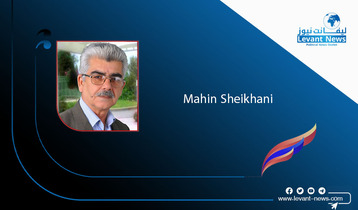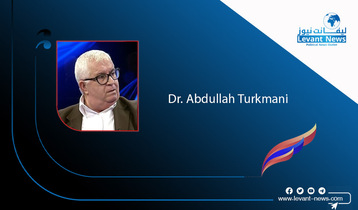-
The End of the Middle East as We Know It

A new Middle East is already in the making. The strong reshuffle of alliances and coalitions in the Middle East and North Africa (MENA) region is leaving the peoples of the region and their regimes in a state of unhealthy confusion and uncertainty. This analysis will try to draw a rough map of the now forming coalitions and alliances in the MENA region, in an attempt to understand where the region, and the world innately affected by its deviations, are heading. Middle East
Over the past year, the MENA region has been witnessing a historical reshuffle of coalitions and centers of power that had remained intact, for decades, even when episodes of variating undercurrent dynamics occurred. That includes not only political and geopolitical alliances, but also bilateral relations based on brotherly bonds, especially in the tribal Arab Gulf region. The current changes in MENA are mostly voluntary, based on a newly adopted pragmatic and self-centered approach. The United States’ withdrawal from the Middle East, highlighted by Biden Administration’s indifference towards the many plights of the region, and the recent decisions to withdraw US troops from Iraq and Afghanistan, is playing an obvious role in accelerating the MENA reshaping process.
Conspiracy theorists love to claim that the United States is the hidden force behind the Arab Spring revolutions, which erupted against Arab dictator regimes, more than ten years ago. They claim that the purpose of the US, by initiating those revolutions, was to destroy the long-standing system of alliances and power balances in the Middle East, and build a new region that is more friendly to the US foreign policy and interests. Former US Secretary of State Condoleezza Rice’s famous speech in 2006 about the “creative chaos” through which a “new Middle East” would be born enhanced these claims. However, the past decade has proven the invalidity of these conspiracy theories. The Arab Spring revolutions toppled a few dictators, but they did not change the general system of the region. The US long presence in the Middle East has kept the general system of governance of the Middle East region unbroken, no matter what happens. Yet, the current withdrawal of the United States from the Middle East is what is expected to break this system.
At the east of the Middle East, Arab Gulf countries are purposefully liberating themselves from the historical brotherly bonds and tribal ties that dictated their collective and unilateral moves and decisions, for centuries. Over the past two decades, important Arab Gulf countries, like Saudi Arabia, Qatar, and the United Arab Emirates (UAE) have grown into modern pragmatic states with self-centered focus on expanding their wealth and strength. This created a state of competition, sometimes as sharp as rivalry, that is now shaping most of the political, economic, and security-related decisions of these countries.
Saudi, UAE, and Qatar are spending billions of dollars on expanding and strengthening their military structures; sometimes to an extent that exceeds their geographic sizes and the potential threats they may be facing. According to Global Firepower military strength ranking for the year 2021, Saudi Arabia and UAE are among the top six militaries of the Middle East, side by side with the old established militaries of Turkey, Egypt, Iran, and Israel. Several military analysts call Emirates “the Little Sparta” for its superior military competence compared to its relatively small population and geographic area. The UAE is about to become the first Arab country, and the second Middle East country after Israel, to own the F-35 stealth fighter jets, within the framework of a $23 billion arms deal, which it signed in 2020 with the Trump Administration.
This growing competition between Arab Gulf countries has also echoed into the economic arena, in a way that may, on the long term, threaten the coherence and feasibility of the Gulf Cooperation Council (GCC). Since 1970s, the economies of Arab Gulf monarchies depended, almost entirely, on locally discovered wealth of petroleum resources, in providing means of living for their citizens. The small number of populations in Arab Gulf countries compared to the great income generated from oil production, helped with effortlessly rising their GDP per capita, and thus improving citizen satisfaction rates and enjoying domestic political stability.
However, in the past few years, major Arab Gulf countries, particularly Saudi Arabia and UAE, started to vision diversifying their oil-dependent economies. This brought the two countries into competition over attracting western investments and partnership opportunities. The UAE is achieving a lot of progress in this economic competition, compared to Saudi Arabia, and other Arab Gulf countries. According to Doing Business Index, for the year 2020, UAE is ranked number one in the Middle East, and number 16 in the world, in terms with the ease of doing business criteria. That is compared to Saudi Arabia’s ranking as number 62, and Qatar’s ranking as number 77.
Nevertheless, Saudi Arabia, UAE, and Qatar are also the most politically active, outside of their borders, out of all the Arab Gulf countries. Kuwait and Oman, for example, are not that politically hyper, outside of their borders, despite their economic and political importance for the stability of the Gulf and Levant regions. In that regard, the political competition between Saudi, Emirates, and Qatar have taken several shapes and sizes, over the years. It ranged from strong brotherly tribal bonding to diplomatic boycott and extreme media wars that extended to politically lobbying against each other’s interests in Washington and Brussels. But the way this political competition between Arab Gulf countries has evolved in the past year is really historic and unprecedented, in a way that forced re-shaping coalitions, not only all over the greater Middle East region, but also in the heated eastern Mediterranean and inside the European Union.
In August 2020, the UAE took the historical step of establishing a full normal relationship with Israel, by signing the Abraham Accords. Unlike Arab countries who previously normalized relations with Israel, the UAE decided to walk the walk to the very end. Immediately after signing the normalization agreement between the two states, the UAE and Israel cooperated on a huge public relations campaign that introduced the two peoples to each other and helped dramatically in breaking many inherited taboos. By fostering the relationship with Israel, on that deep level during this very short period of time, the UAE succeeded to re-introduce itself to the US and Europe as a reliable political and business partner; or as an Arab country that is not like any other Arab country.
From there, the UAE started to approach southern European countries, especially those in dispute with Turkey, which Abu Dhabi officials label as a foe. Last summer, during the heated conflict between Turkey and Greece, the UAE approached Greece to sign military and economic cooperation agreements. Then, they conducted joint military exercises, at the disputed waters in the Aegean and the eastern Mediterranean, to further pressure Turkey. While UAE started to lean more towards the west, Saudi Arabia started to focus more on enhancing its status in the Middle East, by fixing relations with its former dislikes Qatar and Turkey. Also, this month, some media reports mentioned that Saudi Arabia has started talks with its historical enemy, Iran; that are mediated by the Iraqi government. Saudi’s slowly reviving relations with Turkey and Qatar, who enjoy good relationship with Iran, may also help create a truce between Saudi and Iran, in Yemen.
Over the past three years, Turkey and Qatar managed to create an important coalition that ruthlessly challenged the UAE and Saudi Arabia led coalition. The diplomatic boycott of Qatar by the Arab quartet of Saudi Arabia, UAE, Bahrain, and Egypt, in 2017, helped bring Qatar and Turkey closer. Through cooperation, Qatar managed to handle the consequences of the Arab boycott, and take first steps towards building a professional national military corpse, for the first time in its history. Meanwhile, Qatar’s concurrent investments in Turkey helped rescue the ailing Turkish economy several times, and also provided fund to some of the military operations of the Turkish army, outside its borders.
The Arab quartet diplomatic boycott to Qatar officially ended in January 2021, by signing Al-Ula Declaration, but Qatar’s relationship with Turkey remained strong. Since then, Qatar has been actively improving its relationship with Egypt and Saudi Arabia, while also mediating for reconciling Turkey with Egypt and Saudi Arabia. On its part, Turkey has been taking leaps towards these reconciliations, especially with Egypt, during the last three months. Currently, Egypt is seriously considering to join the new forming alliance of Saudi, Turkey, and Qatar. That is mainly motivated by Egypt’s uncertainty towards the UAE. Middle East
Egypt always viewed Emirates as a sisterly country and a reliable ally. The UAE has always been on the side of Egypt, especially during the tough time of the Arab Spring and its aftermath. However, UAE’s recent regional moves, with intentional disregard to Egypt’s regional interests, started to raise a lot of question marks among Egyptians. For example, the UAE declined to show support for Egypt in its dispute with Ethiopia over the Nile River, while most of the Arab countries did. The UAE has been planning for a project with Israel to transfer oil from the Gulf to Europe, via Israeli ports in the Red Sea and the Mediterranean, that is believed to hurt the strategic value of the Suez Canal, which is one of the main sources of income for Egypt. In mid-April, the UAE formed a new regional coalition with Israel, Cyprus, and Greece to cooperate on regional issues, in the Mediterranean and the Middle East. Egypt, which is one of the most influential players in both regions, was not invited.
Now, the question is: what does this power reshuffle means for the future of the greater Middle East and the world? On one hand, it means that the UAE will continue to seek western alliances and partners, while freeing itself from the heavy troubles of the Arab neighbors, so it can go faster with realizing its own unlimited ambitions. Given UAE rulers’ professionality and dedication, there is no doubt that the UAE will achieve a dazzling success in this regard. On the other hand, a new quartet alliance will be formed by the powerful odds: Saudi Arabia, Qatar, Egypt, and Turkey. This new quartet, if successfully formed, will literally dictate every single detail in the Middle East, for decades to come. Together, the new quartet will be able to: (1) contain Iran and mitigate its threat, (2) form a strategic military coalition enhanced by their strategic geographic locations in Europe, Africa, and Asia, and (3) dominate the world trade flow through the Red Sea and the Mediterranean.
In conclusion, this could be the end of the Middle East as we know it. But it will be the beginning of a stronger more stable and more powerful region. The current reshuffling of political alliances in the Middle East, based on pragmatic, rather than fiery and emotional, agendas may be the beginning of establishing long-term peace and stability in the ever-boiling region. That is particularly possible in light of the recent steps taken by the United States and its western allies to gradually withdraw from the Middle East. Let’s not fear the change, then! Almost always, change leads to positive outcomes, especially when it happens voluntarily and not by the pressure of some external force. Middle East

BY: Dalia Ziada levant
Tags
You May Also Like
Popular Posts
Caricature
BENEFIT Sponsors BuildHer...
- April 23, 2025
BENEFIT, the Kingdom’s innovator and leading company in Fintech and electronic financial transactions service, has sponsored the BuildHer CityHack 2025 Hackathon, a two-day event spearheaded by the College of Engineering and Technology at the Royal University for Women (RUW).
Aimed at secondary school students, the event brought together a distinguished group of academic professionals and technology experts to mentor and inspire young participants.
More than 100 high school students from across the Kingdom of Bahrain took part in the hackathon, which featured an intensive programme of training workshops and hands-on sessions. These activities were tailored to enhance participants’ critical thinking, collaborative problem-solving, and team-building capabilities, while also encouraging the development of practical and sustainable solutions to contemporary challenges using modern technological tools.
BENEFIT’s Chief Executive Mr. Abdulwahed AlJanahi, commented: “Our support for this educational hackathon reflects our long-term strategic vision to nurture the talents of emerging national youth and empower the next generation of accomplished female leaders in technology. By fostering creativity and innovation, we aim to contribute meaningfully to Bahrain’s comprehensive development goals and align with the aspirations outlined in the Kingdom’s Vision 2030—an ambition in which BENEFIT plays a central role.”
Professor Riyadh Yousif Hamzah, President of the Royal University for Women, commented: “This initiative reflects our commitment to advancing women in STEM fields. We're cultivating a generation of creative, solution-driven female leaders who will drive national development. Our partnership with BENEFIT exemplifies the powerful synergy between academia and private sector in supporting educational innovation.”
Hanan Abdulla Hasan, Senior Manager, PR & Communication at BENEFIT, said: “We are honoured to collaborate with RUW in supporting this remarkable technology-focused event. It highlights our commitment to social responsibility, and our ongoing efforts to enhance the digital and innovation capabilities of young Bahraini women and foster their ability to harness technological tools in the service of a smarter, more sustainable future.”
For his part, Dr. Humam ElAgha, Acting Dean of the College of Engineering and Technology at the University, said: “BuildHer CityHack 2025 embodies our hands-on approach to education. By tackling real-world problems through creative thinking and sustainable solutions, we're preparing women to thrive in the knowledge economy – a cornerstone of the University's vision.”
opinion
Report
ads
Newsletter
Subscribe to our mailing list to get the new updates!






















